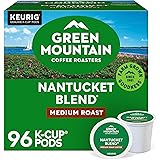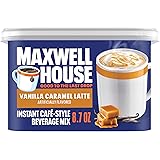Unlocking Exceptional Coffee Flavor: Your Comprehensive Guide to Brewing Great Coffee
For many coffee enthusiasts, the daily ritual of brewing a cup at home is a cherished moment. Yet, transforming ordinary beans into an extraordinary beverage often feels like a mysterious art. Fortunately, achieving truly great coffee is more science than magic, relying on a few fundamental principles that significantly impact the final taste. If you’ve just watched our video above, you already have a fantastic foundation of essential tips, but let’s dive even deeper into these techniques to help you master your morning brew and consistently enjoy delicious results.
Precision in Temperature: The Sweet Spot for Optimal Extraction
One of the most critical factors determining your coffee’s flavor profile is the water temperature. The video correctly highlights that the ideal range for brewing is between 88 and 94 degrees Celsius (190-200°F). This specific temperature window is crucial because it allows for the optimal extraction of desirable compounds from the coffee grounds without pulling out bitter or unpleasant notes.
Pouring water that is too hot, directly off a rolling boil, can scald the coffee grounds. This aggressive heat over-extracts bitter compounds, often leading to a harsh, burnt taste in your cup. Conversely, water that is too cool will under-extract the coffee, resulting in a thin, sour, or weak flavor profile. Therefore, by simply allowing your freshly boiled water to rest for approximately 30-60 seconds, it naturally cools into this ideal brewing range, preventing that unwanted bitterness from developing.
The Golden Ratio: Consistency is Key to Great Coffee
Achieving a consistently excellent cup of coffee hinges significantly on maintaining the correct coffee-to-water ratio. The recommendation of 60 grams of coffee per liter of water serves as an excellent starting point, often referred to as a balanced “Golden Ratio” in the coffee world. This proportion ensures a robust yet not overwhelming flavor.
However, measuring accurately is paramount for consistency. While some might eyeball it, the easiest and most reliable method involves using a kitchen scale. Weighing your coffee grounds allows for precise adjustments and replicable results, unlike using measuring spoons, which can vary wildly based on grind size and how densely the coffee is packed. Mastering this specific ratio ensures that whether you’re making a single cup or a full pot, the taste remains uniformly delightful.
Dose vs. Brew Time: Tailoring Coffee Strength Effectively
A common misconception among home brewers is that increasing brew time will make coffee stronger. In contrast, the video wisely advises against this practice. If you desire a stronger coffee, you should increase the dose, meaning using more coffee grounds for the same amount of water. Prolonging the brew time beyond the optimal window often leads to over-extraction, drawing out those undesirable bitter compounds and creating an astringent, unpleasant flavor.
Conversely, if you prefer a weaker coffee, do not shorten the brew time excessively. Instead, brew the coffee correctly according to the optimal extraction time for your chosen method, then dilute it with hot water to achieve your preferred strength. This method preserves the coffee’s inherent flavors and nuances, preventing the sour notes often associated with under-extracted, quickly brewed coffee.
Rinsing Your Filter Paper: A Small Step for a Big Flavor
For those who use paper filters, such as with a Chemex, V60, or standard drip machine, a simple yet often overlooked step can drastically improve your coffee’s taste: rinsing the filter paper with hot water. This quick pre-rinse accomplishes two essential tasks. Firstly, it washes away any residual papery taste or fiber dust that could otherwise impart an undesirable flavor to your final brew. Secondly, the hot water pre-heats your brewing vessel, ensuring that the water temperature remains stable throughout the entire extraction process, further contributing to a clean and well-balanced cup.
Stovetop Brewing Techniques for Enhanced Flavor
Making coffee with a stovetop brewer, commonly known as a moka pot, requires a specific approach to maximize flavor. The video highlights a critical point: adding cold water to the bottom chamber and then heating it gradually can “bake” the coffee grounds. This happens because the prolonged heating time causes the water to slowly heat up the entire apparatus, including the coffee grounds in the middle chamber, before the actual brewing pressure is achieved.
Instead, boiling your water first before adding it to the moka pot significantly speeds up the brewing process. This rapid heat transfer reduces the contact time between the grounds and the developing heat, preventing the coffee from being exposed to excessive heat for too long. The result is a quicker extraction, a more intense flavor, and a noticeable improvement in the overall quality of your stovetop brew.
Choosing Your Ideal Brewer: Matching Preferences to Method
The vast world of coffee brewing offers a diverse range of brewers, each designed to highlight different characteristics of the coffee. Understanding these differences allows you to select a brewer that perfectly matches your personal taste preferences.
-
Cafetiere (French Press): If you appreciate a heavier, richer, and more full-bodied coffee, a cafetiere is an excellent choice. This immersion brewing method allows coffee grounds to steep directly in water, retaining more of the coffee’s natural oils and fine sediments. This creates a dense, velvety mouthfeel and robust flavor, often preferred by those who enjoy darker roasts.
-
Chemex and Paper Filter Brewers: Conversely, if your palate leans towards more delicate, thinner-bodied, and cleaner coffees, brewing with a paper filter system like the Chemex or a pour-over dripper (e.g., Hario V60) is ideal. The paper filter effectively traps fine particles and oils, resulting in a cleaner cup with brighter acidity and distinct flavor notes, allowing the nuances of lighter roasts to truly shine through.
The Power of a Burr Grinder: Consistency Above All
Perhaps one of the most impactful upgrades a home brewer can make is investing in a quality grinder, specifically a burr grinder, as opposed to a blade grinder. The difference is profound. Blade grinders operate more like blenders, chopping coffee beans inconsistently into varying particle sizes. This creates a mix of very fine “fines” and larger chunks, leading to an uneven extraction where some particles are over-extracted and others are under-extracted, resulting in a muddled and often bitter or sour cup.
In contrast, a burr grinder crushes the coffee beans between two abrasive surfaces (burrs) to create a remarkably uniform grind size. This consistency is paramount because it ensures that all coffee particles extract at roughly the same rate, unlocking the full, balanced flavor potential of your beans. A consistent grind is a cornerstone of great coffee, regardless of your brewing method.
Maintaining Your Brewer: The Unsung Hero of Flavor
Ensuring your coffee brewer is impeccably clean is a fundamental step often overlooked in the quest for great coffee. As the video rightly points out, choosing a brewer that can be easily disassembled for thorough cleaning is highly advisable. Over time, coffee oils and fine sediment can build up in your brewing equipment, leading to stale, rancid flavors that will negatively impact even the freshest beans.
Regular cleaning prevents these unwanted tastes from contaminating your brew. Disassembling components allows you to reach every nook and cranny, ensuring that every part that comes into contact with coffee or water is free from residue. This simple maintenance routine guarantees that your brewer delivers pure, unadulterated coffee flavor every single time.
Decoding Coffee’s Language: Body and Acidity
To truly appreciate and describe coffee, understanding terms like “body” and “acidity” is essential. The video provides excellent, intuitive analogies:
-
Body: This refers to the weight or mouthfeel of the liquid on your tongue, much like the difference between skim milk and full-fat milk. A full-bodied coffee feels rich and substantial in your mouth, often associated with longer contact times or immersion brewing methods like a French Press. Conversely, a light-bodied coffee feels delicate and airy, characteristic of paper-filtered brews.
-
Acidity: This describes the bright, often tingling sensation you feel at the sides of your mouth, similar to the zest of a freshly squeezed orange juice. Coffee acidity is not a negative sourness but a desirable characteristic that adds vibrancy, complexity, and life to the cup. It’s often found in coffees from specific origins or those with lighter roasts.
Learning to identify these characteristics enhances your appreciation for coffee and helps you better articulate your preferences.
The Freedom of Fresh Grind on the Go: Portable Grinders
For those who refuse to compromise on fresh coffee, even when traveling, a portable grinder is an invaluable companion. The video highlights a slim model like the Porlex, which conveniently fits inside an Aeropress, saving precious space in your luggage. Grinding your beans just before brewing is a non-negotiable step for optimal flavor, as roasted coffee begins to lose its aromatic compounds very quickly once ground. A portable burr grinder ensures that whether you’re camping, staying in a hotel, or visiting friends, you can always enjoy the freshest, most flavorful cup of great coffee possible.







